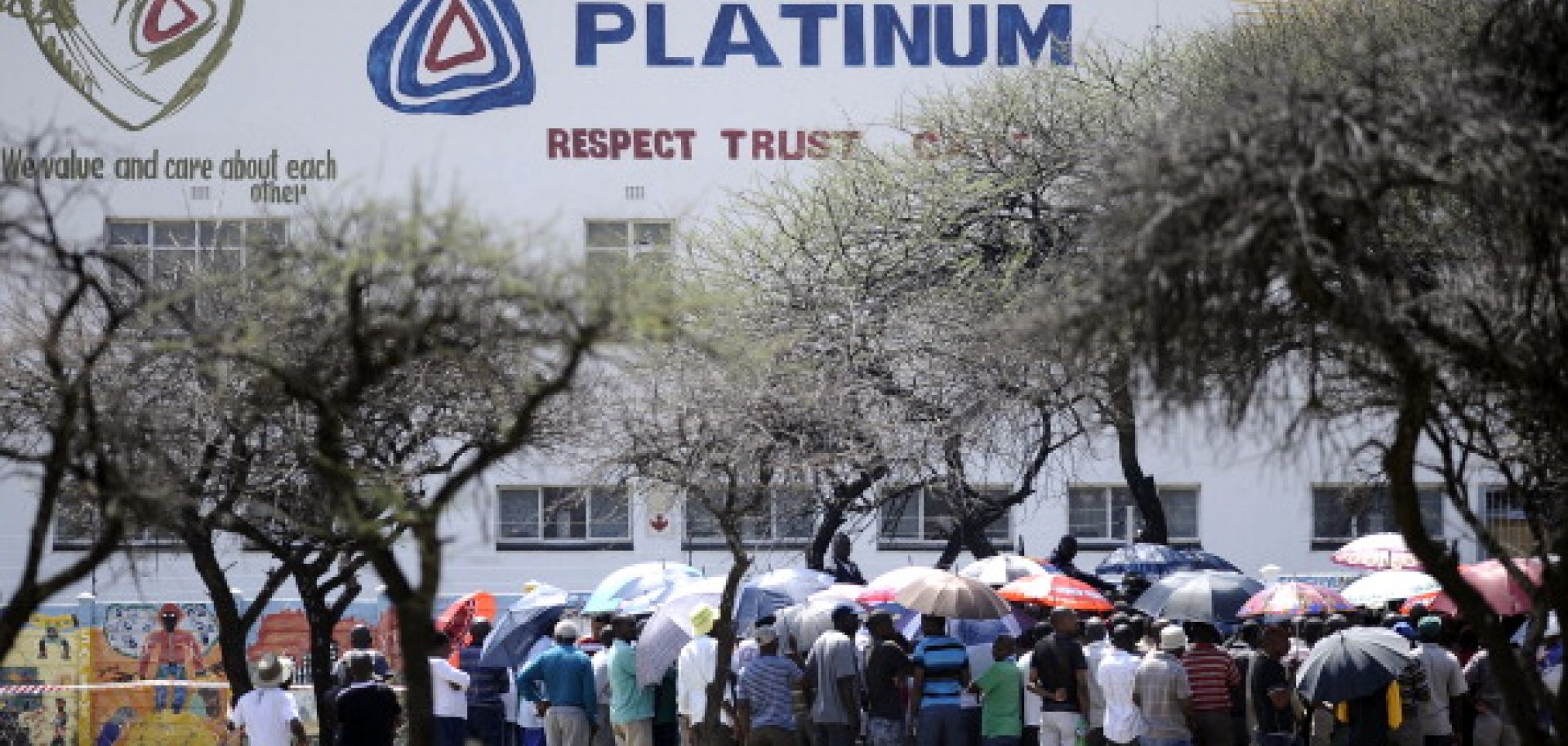ASSESSMENTS
South Africa: The Prospects of Gold and Platinum
Oct 17, 2012 | 10:00 GMT

STEPHANE DE SAKUTIN/AFP/GettyImages
Summary
South Africa has the world's largest mineral reserves, but labor disputes have crippled its mineral production — particularly its production of gold and platinum. On Oct. 15, negotiations broke down between labor union representatives and South Africa's three largest gold producers. South African platinum producers face similar prospects. Workers for Anglo American Platinum, the world's largest platinum producer, often referred to as Amplats, recently launched strikes throughout the country, and from August to September, more than 30 people were killed in strikes at facilities belonging to platinum producer Lonmin. To pacify its strikers, Lonmin agreed to increase workers' salaries by as much as 22 percent — a dangerous precedent for South Africa, where production costs in the gold and platinum mining sectors already are high.
Labor is a significant component of these production costs. So are energy costs, which render South African gold and platinum relatively uncompetitive on global markets. Hikes in labor costs, such as Lonmin's 22 percent wage increases, would further decrease competitiveness. If production becomes prohibitively expensive, mining companies will shut down their operations at South Africa's more expensive gold mines, opting instead for cheaper locations elsewhere. However, platinum producers will remain in the country despite high production costs.
Subscribe Now
SubscribeAlready have an account?
